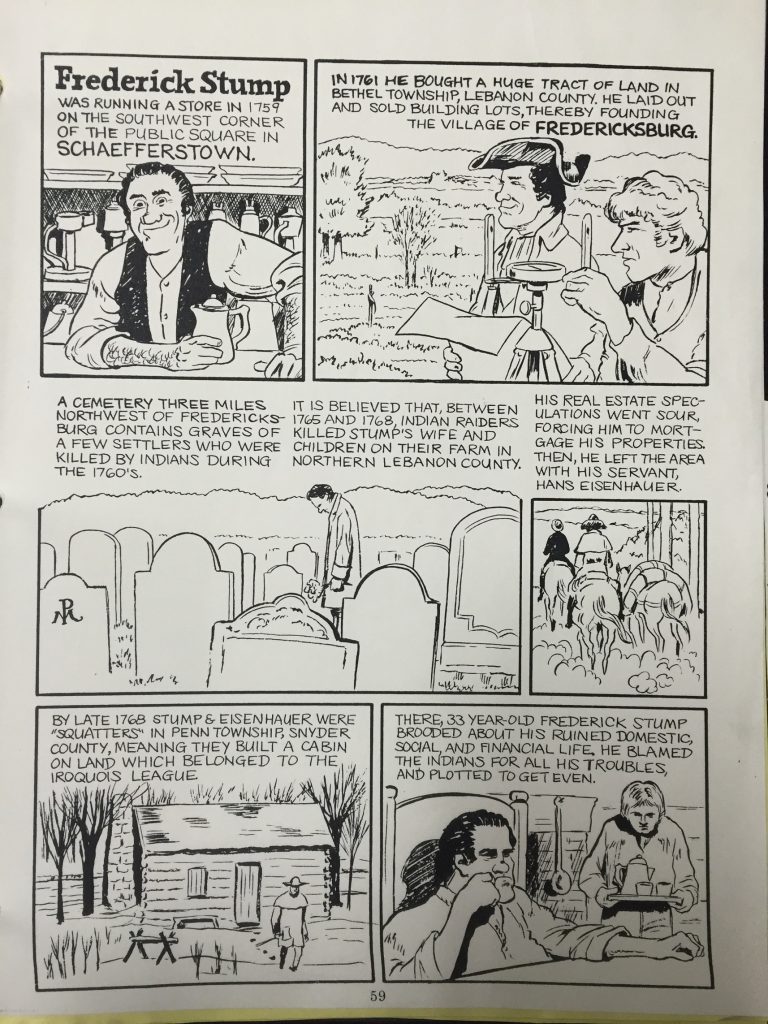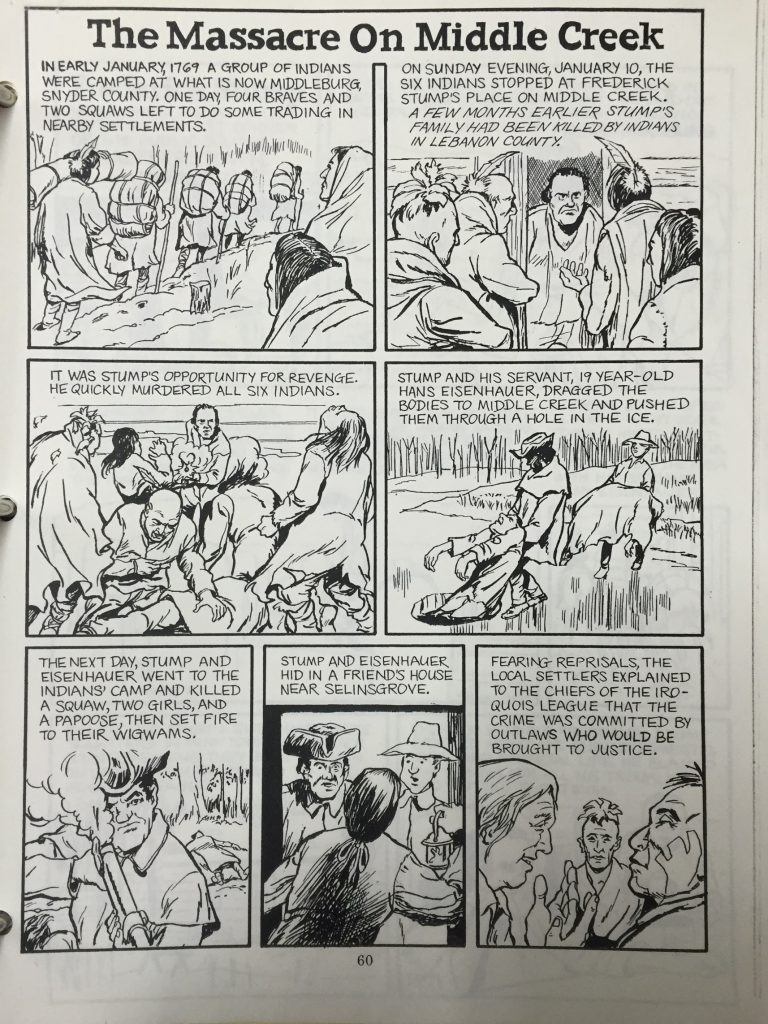By the turn of the twentieth century the physical world of Frederick Stump had been long destroyed, but memories of the mystery surrounding the man remained. Mentions of Stump and that infamous night appeared throughout the 1900s.
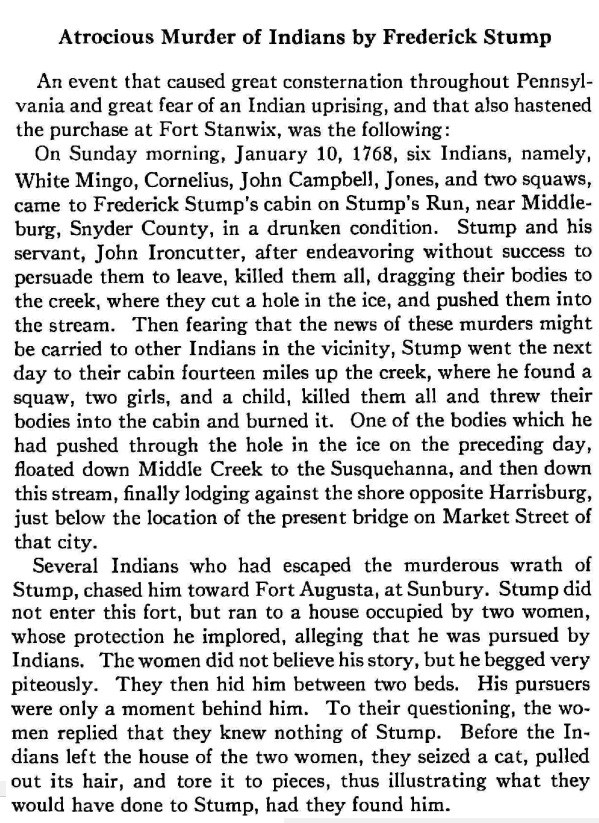
In the early twentieth century local and Pennsylvania historians primarily engaged with the story of the massacre on Middle Creek as one of the more notable instances of Euro-Indian conflict on the Pennsylvania frontier. New details, usually without any documentation, emerged. Writing on behalf of the Pennsylvania Historical Society in 1931, C.H. Sipe told of a bloodthirsty chase across the Susquehanna River, as “several Indians who had escaped the murderous wrath of Stump” pursued him toward Fort Augusta. Sipe’s story continued:
Stump did not enter this fort, but ran to a house occupied by two women, whose protection he implored, alleging that he was pursued by Indians. The women did not believe his sory, but he begged very piteously. They then hid him between two beds. His pursuers were only a moment behind him. To their questioning, the women replied that they knew nothing of Stump. Before the Indians left the house of the two women, they seized a cat, pulled out its hair, and tore it to pieces, thus illustrating what they would have done to Stump, had they found him.
Sipe provided no citations to this material. Any additional outside attention to the subject of the Stump Massacrewas brought about by Tennessee descendants of Stump, who wished to clear his name.

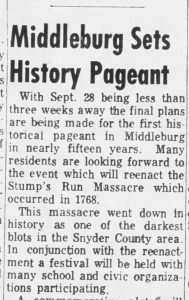 In 1968, on the bicentennial of the Stump Massacre, local scouts memorialized the infamous killings in one of the most public events to date. Middleburg identified the event as a source of local heritage, bringing people together around a shared past.
In 1968, on the bicentennial of the Stump Massacre, local scouts memorialized the infamous killings in one of the most public events to date. Middleburg identified the event as a source of local heritage, bringing people together around a shared past.
However, with the help of Boy Scout Troop 415, Stump and Ironcutter’s story expanded outside of academic circles, at least locally. In 1968 Troop 415 organized and hosted a 200th anniversary reenactment of the massacre in Middleburg. The reenactment, which was part of a local festival that included dancing, food, games, and commemorative plates, solidified the massacre’s importance in local folklore. Stripped from the event was any sense of its significance in the late eighteenth century.
Patrick M. Reynolds’ Pennsylvania Profiles brought Stump and Ironcutter to life in comic strip form.
The penetration of the Stump legacy into local popular culture continued into 1999 with the publishing of Patrick M. Reynold’s “Colorful Characters of Pennsylvania” in the Pennsylvania Profiles series.Included in this publication were the pages displayed here.
They help to perpetuate a certain narrative about the killings seen throughout several of the twentieth-century works: they claim that the murders, though brutal in the extreme, were in some way “justified.” Reynolds’ graphic presentation interprets the affair as a good man pushed too far.
Beyond the fact that the comic records the year of the massacre as 1769 instead of 1768, there are several other reasons to think critically about this depiction. The publication notes that relations between the Iroquois League and the colonists were smoothed over by the local settlers. However, in reality the relations were smoothed over by Captain Patterson, white traders, and Sir William Johnson, none of whom were local residents. Furthermore, the Iroquois League had not used that name for over forty years by the time the Stump Massacre occurred: by then they were referred to as the Six Nations. Finally, Reynolds’ use of the phrase “it is believed” shows how murky the document trail is on Stump’s life before and after January 1768. Such is the stuff of legends.
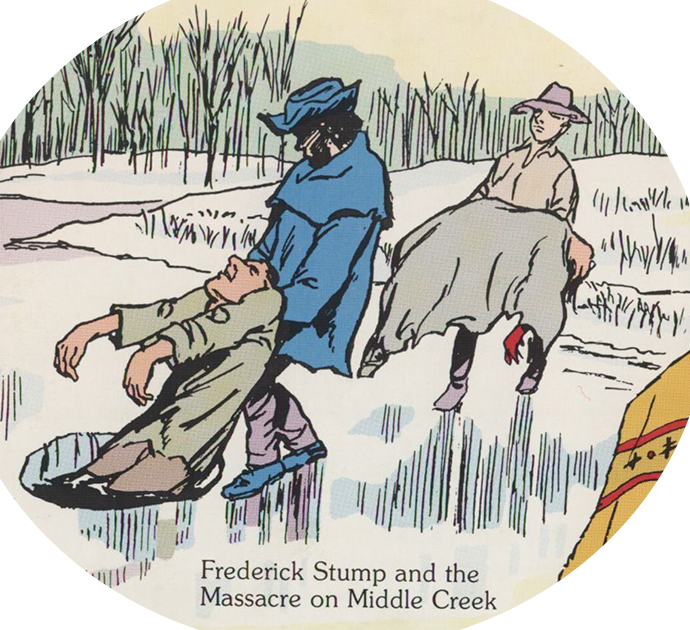
The illustration that Reynolds featured on the back cover of the book epitomizes the lure of the Stump Massacre story centuries after the events occurred.
